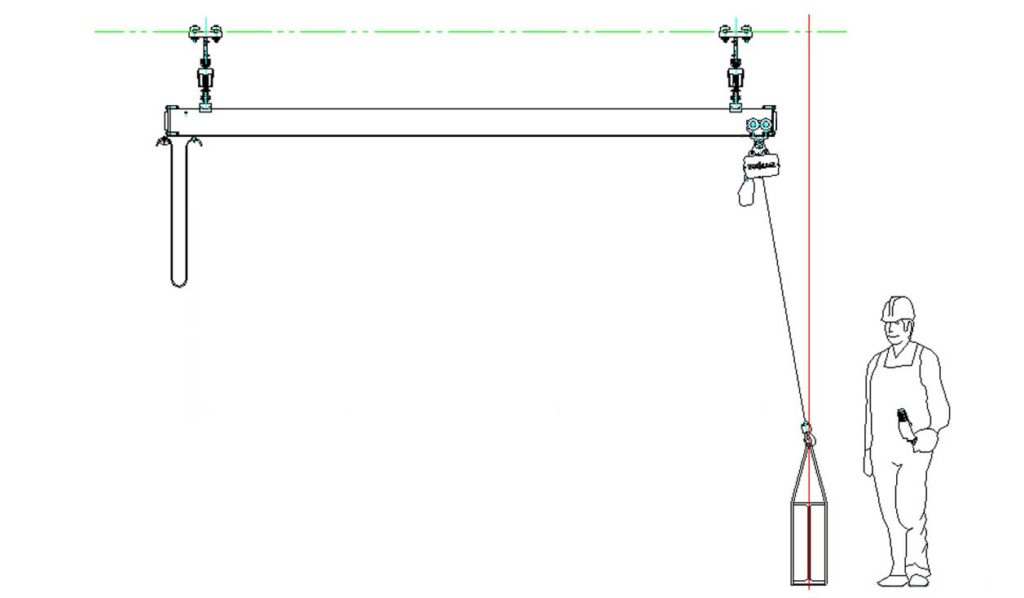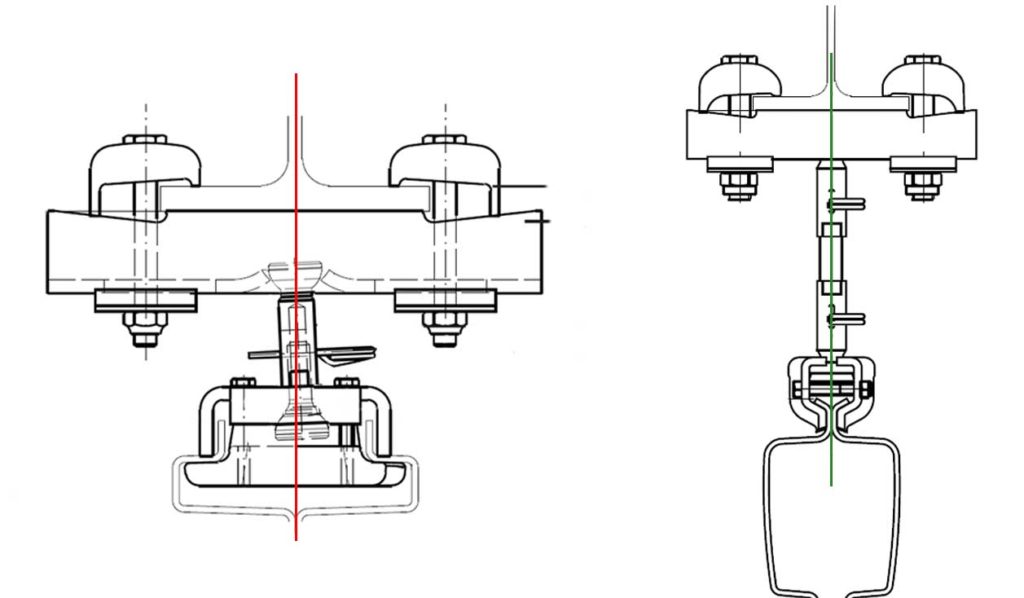Safety is key for every business. When you have lifting equipment in your operations, maintaining and correct operation of the equipment will help create a safer work environment. Working with a reputable dealer and installation team will help create a successful installation and startup of your overhead lifting equipment. Then, properly trained operators will use the equipment in the way it has been designed and regular inspections will find worn parts or broken components. All of these factors help create a safer work environment for your workforce and, as a bonus, your equipment lasts longer.
As a manufacturer of lifting equipment, we train our network of installers and inspectors, and we regularly work with technicians to diagnose issues with all our products. So whether you are a crane service technician who installs or inspects, or an operator of our KBK modular crane systems, we’ve put together a list of the most commonly seen installation errors we see so you can be proactive in keeping your work environment safer and more efficient.

Minimum spacing requirements assure the system maintains proper strength and capacity.
Track Splice Joint & Track Hanger Installed Too Far Apart
The most common issue we see with installations and projects is when a splice joint and hanger are installed too far apart. A splice joint is where two adjoining track sections are bolted together. With so many different sizes of KBK track available, there is not one single requirement that fits them all. The minimum spacing requirement assures that the system maintains proper strength and capacity. Always consult your owner’s manual for the proper requirement.

End stops should not be used as the operating stop.
Using an End Stop or End Cap as an Operating Stop
End stops are critical pieces of the KBK system, but they are not intended to be the operational stop. A properly designed KBK system allows for full coverage of the work area so you can lift at all points where needed without contacting end stops. The end stop is simply a cover that prevents the trolley from coming out of the end of the enclosed track. Equipped with an internal rubber buffer pad, it is intended to function as an emergency stop if accidental contact occurs. Regular contact with the end stop causes premature wear to the buffer and impact damage to the entire KBK system. If your system has a motorized trolley, slow down and stop limit switches are recommended to avoid contact with the end stops.

Too much overhang beyond the hanger causes the system to kick-up on the opposite end.
Too Much Overhang Beyond the Track Hanger or Crane Eye
You’ve all seen the videos on the Internet of people stepping on the head of a rake and the handle smacking them in the face, right? That’s sort of what happens when there is too much overhang beyond the hanger on a KBK system. When you lift a load on excessive extension, it causes the system to kick-up on the opposite end. Your standard system and its components are not designed to withstand the upward force when that happens so the impact can have detrimental effects. Always follow the requirements in your operator’s manual for safety’s sake. If your project does require lifting on an excessive extension, KBK Ergo components can help you do the job in specific applications.

Track hangers and crane eyes should be in a true vertical, or plumb, position.
Track Hangers and Crane Eyes Not in True Vertical
Track hangers and crane eyes need to be plumb in a true vertical position. The components are designed to move and articulate a certain way to compensate for forces experienced by the system as it is operating. We commonly see these issues stemming from the initial installation, but it can happen at any time these components are worked on. When track hangers and crane eyes are installed at an angle, they cannot articulate properly and result in binding, unnatural stress points, and premature wear of the support components. You’ll also notice the plastic on the adjoining hanger rod surfaces wear out quicker. By assuring the track hangers and crane eyes are plumb, you are assuring your system will work as it was designed.

The upper bracket should be aligned symmetrically with the center, or web, of the support steel.
Beam Clamping Upper Bracket Mounted Off-Center
The upper brackets in the KBK system attach to the structural steel of your building. The brackets should be aligned symmetrically with the center or web of the support steel. When the brackets are not aligned properly, the system will not have balanced loading so you cannot lift safely.

Always double check that the spring clips are installed properly so the pin goes through the hole.
Spring Clips for Track Hanger Not Installed Correctly
The spring clips keep the threaded hanger rod from loosening, which is part of the hanger that connects the KBK rail to the structural steel support. Most of the time we see spring clips installed correctly. Occasionally, we see a spring clip errantly installed in the slot below the end of the rod rather than through the proper hole in the rod. When this happens, the clip is not preventing the rod from becoming unthreaded. This can have disastrous consequences and can result in a catastrophic failure, and even the section of KBK rail falling.
Regular inspections have caught these installation errors so always make sure to inspect lifting equipment at the proper intervals to assure a safe work environment.
Whether you are installing, inspecting or operating the KBK modular crane system, being on guard for common issues will help create a safer work environment for everyone. Regular inspections have caught these installation errors and other issues so always make sure to inspect lifting equipment at the proper intervals to assure a safe work environment.
Read our post on how to use Manufacturer’s Documentation for Effective Maintenance and Repair.
- Understanding Wire Rope Lay for Your Next Wire Rope Hoist Repair or Inspection - December 21, 2023
- Diagnosing Additional Error Codes on Demag CANBUS Hoists and Cranes - March 28, 2023
- Maintenance and Service Tips for Demag KB and ZB Motors in Non-Crane Applications - February 7, 2023
